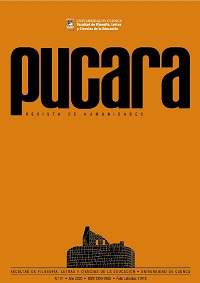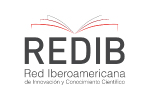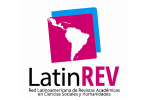The use of Twitter among the students of the Faculty of Philosophy of the University of Cuenca.
DOI:
https://doi.org/10.18537/puc.31.04Keywords:
educación, aprendizaje, tuits, interactividad, redes socialesAbstract
This research was conducted in order to learn what are the current trends related to the use of digital platforms and their influence in the training, education, consumption, interactivity, and entertainment among young university students of the Faculty of Philosophy of University of Cuenca. Considering that, Twitter is a social network that provides ease and speed of communication or news in real time, our aim is to discover how they utilize it for the benefit of their own major specialization and what path they follow in terms of interaction.
Regarding the methodology, a literature review approach is employed, the descriptive research of the results of the consumers of the Twitter network. Surveys were applied to collect the data. The research took place in the Schools with the largest number of students in the Faculty with a total of 401 surveys.
The findings show that, first, the most used network among young people is still Facebook. Second, the School of Communication is where Twitter is used the most. Third, it is the desire of almost all the students the inclusion in their major curriculum the subject, social media management.
Keywords: education, learning, tweets, interactivity, social networks
Downloads
References
Adamic, L. A. (junio de 2005). How to search a social network. Obtenido de How to search a social network: http://www.personal.umich.edu/~ladamic/papers/socialsearch/adamicsocialsearch.pdf
Artero, N. (11 de Febrero de 2011). educaweb . Obtenido de La interacción como eje de aprendizaje en las redes sociales: https://www.educaweb.com/noticia/2011/01/31/interaccion-comoeje-aprendizaje-redes-sociales-4570/
Barnes, J. (1954). Clase y comités en una parroquia de la isla noruega. . Relaciones humanas , 7, 39-58.
Brunner, J. (2003). Educación e internet ¿la próxima revolución? Santiago de Chile : Fondo de Cultura Económica.
Cabero, & Marín. (2013). Percepciones de los estudiantes universitarios latinoamericanos sobre las redes sociales y el trabajo en grupo. Revista de Universidad y Sociedad del Conocimiento (RUSC). Vol. 10, n.º 2, 219-235.
Grosseck, & Holotescu. (2008). Can we use Twitter for Educational activitie 4th International Scientific Conference eLSE. Can we use Twitter for Educational activities “eLearning and Software for Education”. Can we use Twitter for Educational activitie 4th International Scientific Conference eLSE. Can we use Twitter for Educational activities “eLearning and Software for Education”, 17-21.
Islas, c., & Carranza, M. (11 de Febrero de 2011). Apertura. Revista de innovación educativa. Obtenido de Uso de las redes sociales como estrategias de aprendizaje. ¿Transformación educativa?: http://www.udgvirtual.udg.mx/apertura/index.php/apertura/article/view/198/213
Junco, Heiberger, & Loken. (2011). El efecto de Twitter en la participación y las calificaciones de los estudiantes universitarios. Journal of Computer Assisted Learning. Facebook para una interccion mas animada en las aulas, 119-132.
Karinthy, F. (mayo de 2012). SOCIÓLOGOHOLIC. Obtenido de Sociología de las Redes Sociales. Marketing Digital: . Obtenido de SOCIÓLOGOHOLIC. Obtenido de Sociología de las Redes Sociales. Marketing Digital: : http://sociologoholic.blogspot.com/2012/05/frigyes-karinthy.html
Kinnear, T., & Taylor, J. (1998). Investigación de Mercados. Bogotá: McGraw Hill.
Malhotra, N. (2008). Investigación de Mercados. Buenos Aires: Pearson.
Mollett, Moran, & Dunleavy. (2011). Using Twitter in university research, teaching and impact activities. . Impact of social sciences: maximizing the impact of academic research. London, UK.: LSE Public Policy Group, London School of Economics and Political.
Moreno, A. (2008). Métodos de Investigación y Exposición. Quito : Corporación Editora Nacional.
Olivares. (2015 ). Implementación de la red social facebook como recurso didáctico en el aprendizaje colaborativo de estudiantes universitarios. . Revista de Estudios y Experiencias en Educación, 121-136. Redes Sociales. (Abril de 2015). Obtenido de Redes Sociales: http://redesocialestranspolados.blogspot.com/2015_04_19_archive.html
Rodríguez, M. L. (19 de agosto de 2013). Guia de tesis. Obtenido de Guia de tesis. : https://guiadetesis.wordpress.com/2013/08/19/acerca-de-la-investigacion-bibliografica-y-documental
Published
How to Cite
Issue
Section
License
Copyright (c) 2020 victor hugo guillermo, Fredy Eduardo León Martínez, Pedro Xavier Zea Montero

This work is licensed under a Creative Commons Attribution-NonCommercial-ShareAlike 4.0 International License.
Copyright © Autors.

You are free to:
 |
Share — copy and redistribute the material in any medium or format |
 |
Adapt — remix, transform, and build upon the material for any purpose, even commercially. |
Under the following conditions:
 |
Attribution — You must give appropriate credit, provide a link to the licence, and indicate if changes were made. You may do so in any reasonable manner, but not in any way that suggests the licenser endorses you or your use. |
| NonCommercial — You may not use the material for commercial purposes. | |
| ShareAlike — If you remix, transform, or build upon the material, you must distribute your contributions under the same license as the original. |
| No additional restrictions — You may not apply legal terms or technological measures that legally restrict others from doing anything the licence permits. |












